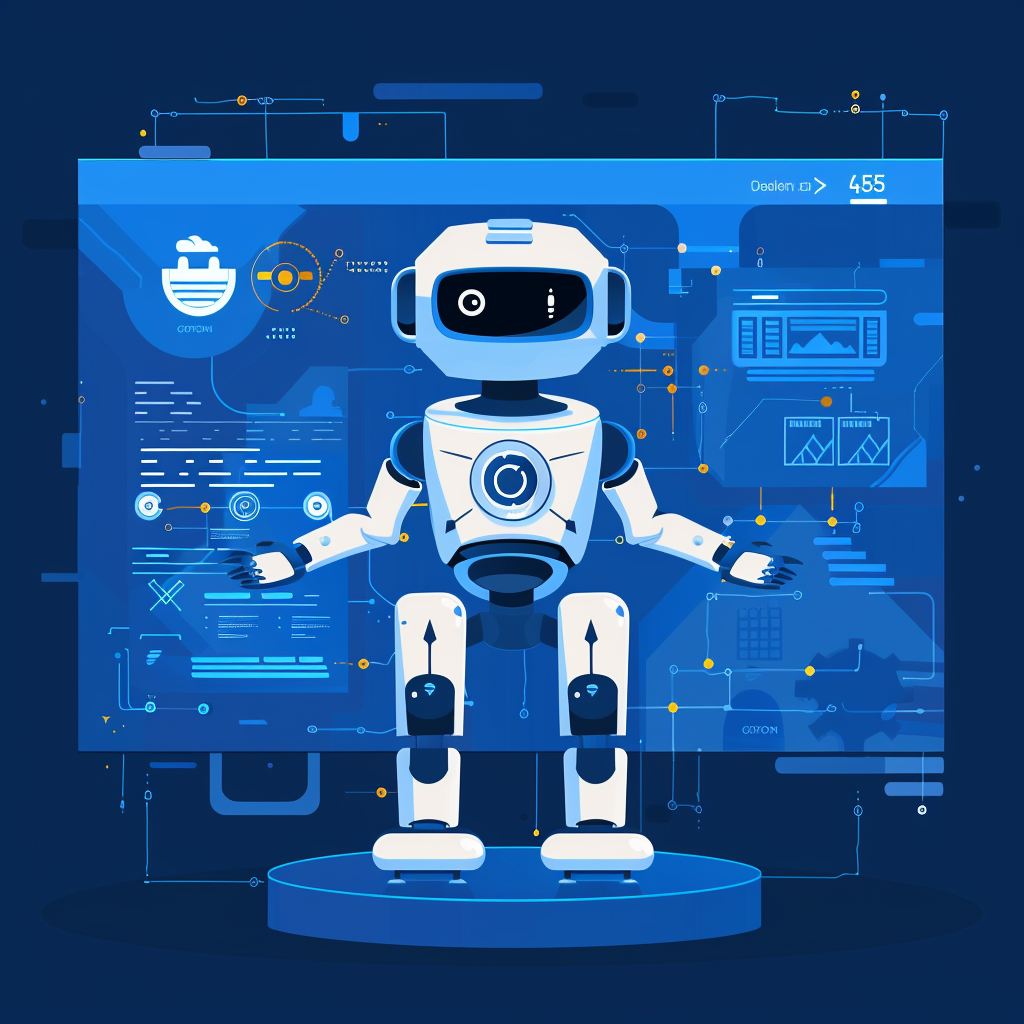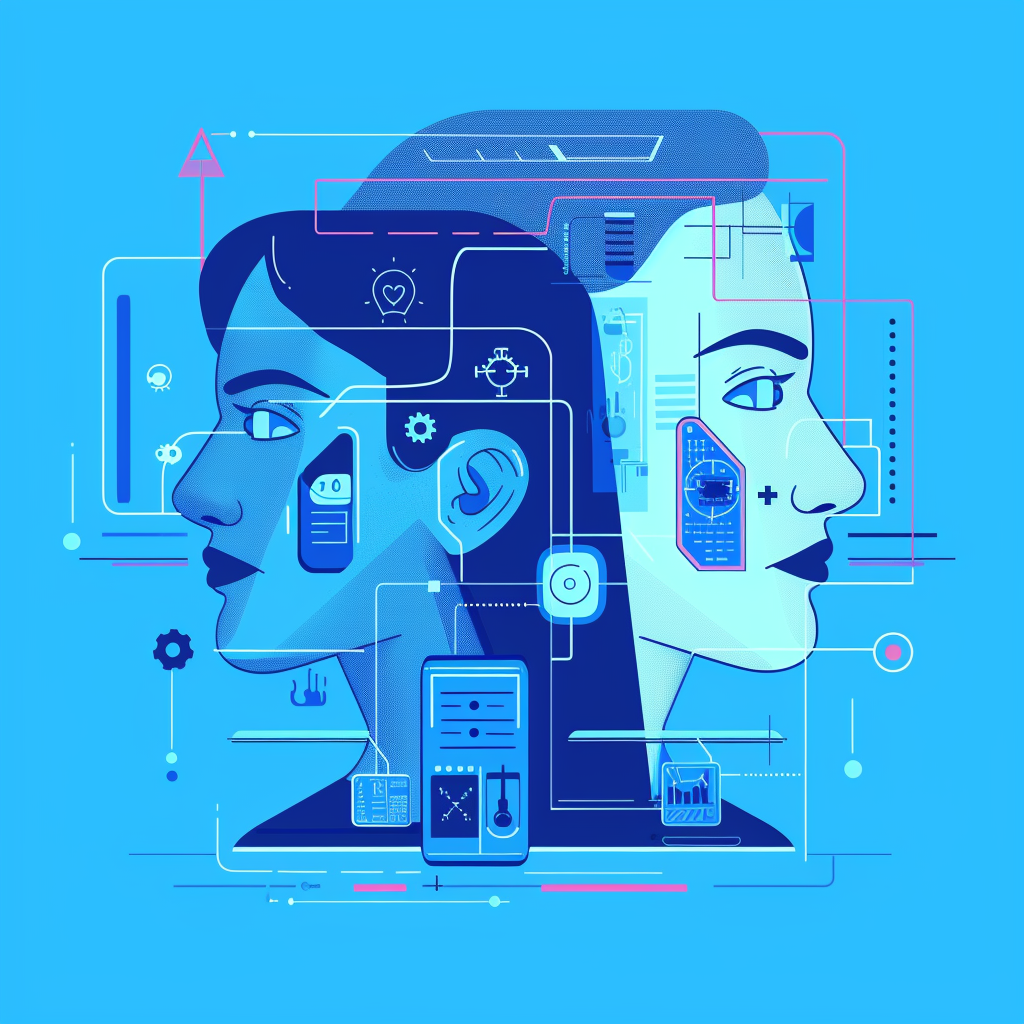Generative AI is a game-changing artificial intelligence, making ripples that echo throughout multiple industries. Far surpassing simple creative automation, it stands out as more than an element in the vast field of AI — portraying the potential to render value that outdoes other types of AIs or analytical technologies. A new report by McKinsey on the economic potential of generative AI technology underlines its profound influence on world economics.
In this article, we’ll discover the world of generative AI: meaning, applications, and its impact on different sectors.
What Is Generative AI: A Closer Look

Generative AI, also known as “creative automation,” covers various methods and technologies that allow machines to produce content autonomously. The output range spans from imagery and text snippets to musical compositions and 3D designs. Unlike standard AI, generative AI goes further than making predictions and ventures into the world of creative algorithms. It employs neural networks coupled with deep learning tactics for creating unique outcomes.
A recent Bloomberg Intelligence (BI) report suggests that the generative AI market size is set to skyrocket, increasing from $40 billion in 2022 to an impressive $1.3 trillion over the next 10 years. This proves that generative AI is a driver of innovation, ushering in an era with endless possibilities. Furthermore, the industries leveraging creative automation are united in their pursuit of common objectives, focusing on elevating the customer experience and revenue growth.
Generative AI Use Cases Across Industries
Healthcare: Enhancing Diagnosis and Treatment
Generative AI has plenty of healthcare applications. By utilizing neural networks and computer vision, generative AI enhances medical data analysis and diagnosis, allowing healthcare professionals to make more precise decisions and provide superior patient care.
Some generative AI healthcare use cases are:
- Improved analysis of medical images. The ability of generative AI to accurately analyze medical images, such as X-rays, CT scans, and MRIs, is revolutionizing AI in healthcare. With the help of AI in healthcare, healthcare professionals can detect subtle abnormalities that might otherwise go unnoticed by the human eye. For example, it can identify minute signs of cancer, fractures, or other conditions, ensuring early and precise diagnoses, which is a key component of AI medical diagnosis.
- Drug discovery acceleration. Pharmaceutical companies are leveraging Generative AI to expedite drug discovery, demonstrating the role of AI in drug discovery. By utilizing AI in pharma, the technology generates molecular structures for potential new medications, offering innovative therapeutic solutions. This accelerates the drug development process and broadens the scope of available treatments for a wide range of diseases.
Manufacturing: Streamlining Efficiency

In the manufacturing sector, generative AI is revolutionizing product design and development. Using generative AI models, manufacturers can create more efficient and cost-effective designs. This saves time and minimizes material waste and energy consumption, promoting sustainable manufacturing processes. For instance, General Electric applied generative AI to optimize the design of a jet engine bracket, which resulted in a 70% reduction in weight and a 30% reduction in material waste.
Some other generative AI use cases in manufacturing are:
- Optimized product design. Generative AI uses complex algorithms to identify efficient design solutions, thereby making products more sustainable and reducing production costs.
- Complex geometry generation. In industries such as aerospace and automotive, generative AI has proven to be highly valuable as it allows for creating geometries that were previously difficult to design manually. By leveraging AI, engineers can now develop designs that enhance factors such as aerodynamics, fuel efficiency, and structural integrity.
Financial Services Industry: Smart Predictive Modeling
Within the financial domain, generative AI takes predictive modeling and risk analysis to a new level. By employing data-driven decision-making, financial institutions can make informed investment choices and better manage risks. This ultimately brings advantages to both businesses and their clients.
Some generative AI use cases in the financial sector are:
- Risk assessment and prediction. Through data-driven decision-making powered by generative AI, financial institutions can enhance investment choices and risk management, benefiting both businesses and clients.
- Fraud detection and prevention. With constant transaction monitoring, generative AI allows for identifying and alerting suspicious activities more swiftly, ensuring the protection of both financial institutions and their clients from fraudulent practices.
Entertainment Industry: Crafting Interactive Experiences
The entertainment business is another beneficiary of generative AI, as this technology facilitates content creation and provides users with personalized content recommendations and engaging experiences. From video games, such as Roblox’s use of generative AI, to streaming platforms, creative automation is changing how we consume and engage with entertainment.
Among the applications of generative AI in entertainment are:
- In-game content production. Video game developers rely on generative AI to produce dynamic in-game content. In this regard, the technology adjusts the game’s mission objectives, level designs, character behavior, and more in real-time, ensuring that gamers have personalized and immersive experiences.
- Automated content creation. Beyond gaming, generative AI automates the creation of scripts, music, and other creative content in the entertainment industry. Along with saving both resources and time, this sort of automation also ensures that the content’s quality is maintained.
Marketing and Advertising: Personalized Engagement

Advertising and marketing are likewise undergoing radical changes due to generative AI. In digital marketing, AI-driven innovation provides advertisers powerful tools for targeting their audience with personalized content. Here are the main marketing activities influenced by generative AI.
Some generative AI use cases in marketing are:
- Personalized content creation. Generative AI tailors content to individual user preferences, providing a high level of personalization in advertising. This leads to higher customer engagement and more effective targeting.
- Ad copywriting and content generation. Advertisers harness generative AI to craft ad copy and creative content. Creative automation is able to generate compelling and relevant messages that resonate with target audiences, driving higher click-through and conversion rates.
Creative Arts: Redefining Artistic Boundaries
One of the most promising applications of generative AI is in the creative arts. Artists and designers are having a digital rebirth thanks to tools like Adobe’s Firefly Generative AI and Photoshop’s AI Generative Fill. These tools give them the power to produce appealing, one-of-a-kind art, which opens up new ways for artists to express themselves.
Here are a few examples of how generative AI is applied in the arts:
- Automated art generation. Generative AI tools like DeepDream or Runway ML allow artists to generate intricate digital art autonomously. These tools serve as a starting point, providing a canvas from which artists can refine and expand their creative visions.
- Design inspiration. Generative AI models, like VQ-VAE-2 or StyleGAN, introduce new design concepts and inspire artists to think beyond traditional boundaries. They inspire originality in the creative process by generating novel concepts for designs that could not have been imagined otherwise.
- Pattern and style generation. Generative AI can create various patterns and artistic styles and even imitate renowned art movements. This gives artists new ways to try out different visual languages and opens up new areas for creative growth.
Conclusion: The Future is Generative

Generative AI‘s influence extends far and wide, touching almost every industry. As we continue to explore its capabilities and refine its applications, we can expect even more profound changes in how businesses operate and connect with their customers.
As the famous saying goes, “You can’t stop progress, but you can help decide what progress is and what isn’t.” Generative AI is the embodiment of progress, propelling innovation and transformation across various industries. Generative AI isn’t merely a tool; it’s an artistic and technological revolution altering the course of multiple industries.




